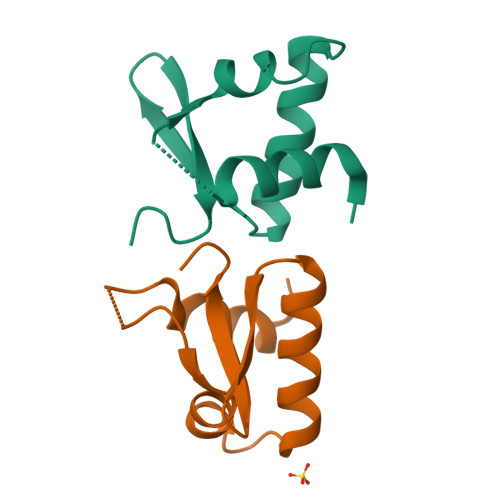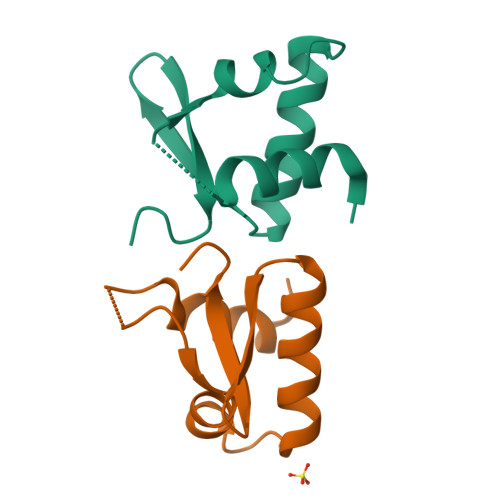Crystallization and preliminary neutron analysis of the dissimilatory sulfite reductase D (DsrD) protein from the sulfate-reducing bacterium Desulfovibrio vulgaris.
Chatake, T., Mizuno, N., Voordouw, G., Higuchi, Y., Arai, S., Tanaka, I., Niimura, N.(2003) Acta Crystallogr D Biol Crystallogr 59: 2306-2309
- PubMed: 14646103
- DOI: https://doi.org/10.1107/s0907444903020596
- Primary Citation of Related Structures:
1WQ2 - PubMed Abstract:
Dissimilatory sulfite reductase D (DsrD) from Desulfovibrio vulgaris has been crystallized for a neutron diffraction study. The initial crystals obtained were too small for the neutron experiment. In order to obtain a larger crystal (>1 mm3), a combination of two techniques was developed to determine the optimum crystallization conditions: a crystallization phase diagram was obtained, followed by crystal-quality assessment via X-ray diffraction. Using conditions determined in this manner, a large single crystal (1.7 mm3) of DsrD protein was subsequently grown in D(2)O solution by the macroseeding technique. A neutron diffraction experiment was carried out using the BIX-3 diffractometer at the Japan Atomic Energy Research Institute (JAERI), collecting data to 2.4 A resolution from an optimized crystal.
Organizational Affiliation:
Neutron Structural Biology, Neutron Science Research Center, Japan Atomic Energy Research Institute, Tokai, Ibaraki 319-1195, Japan.



















